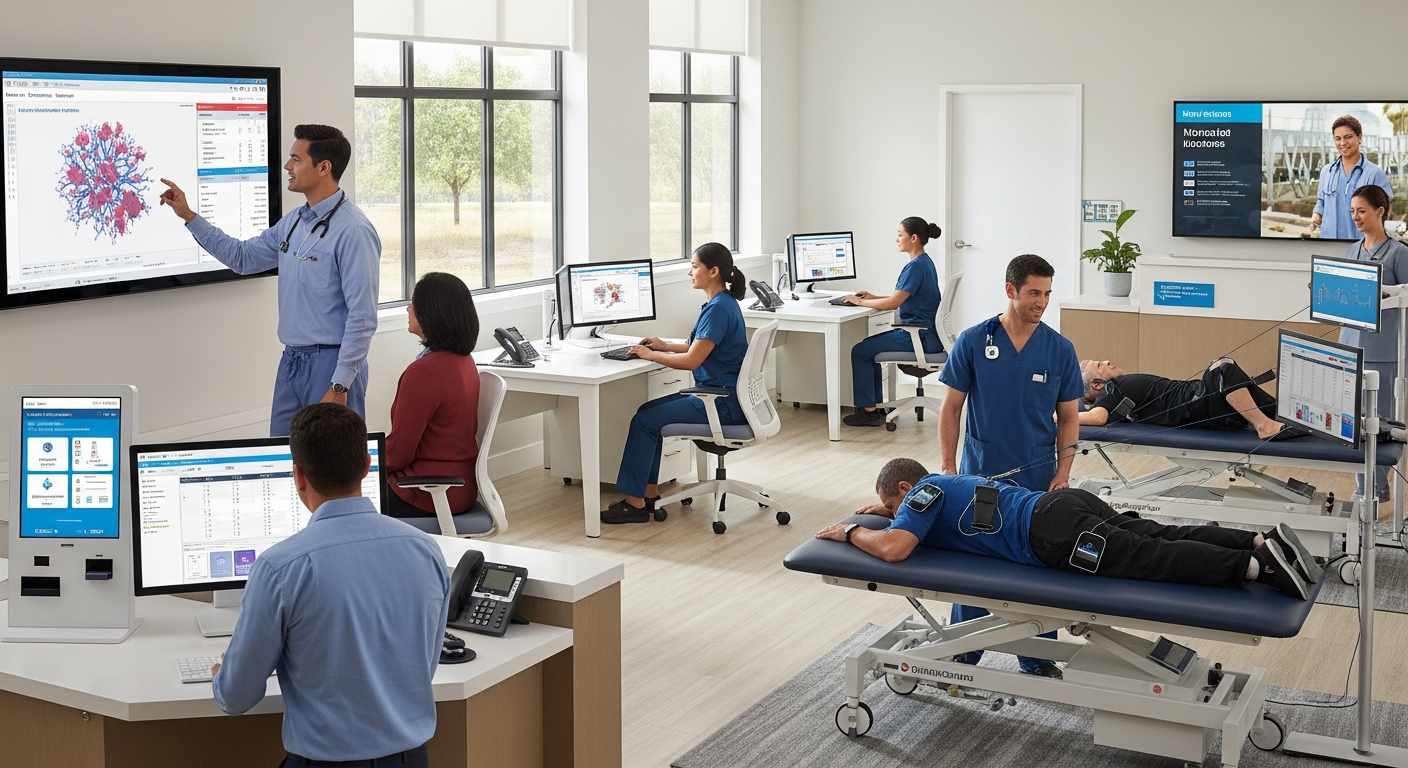Healthcare businesses face unprecedented opportunities in 2025, but success requires a clear growth roadmap for healthcare businesses that adapts to industry shifts. The landscape is rapidly evolving with digital transformation taking center stage, and practices that fail to embrace these changes may find themselves falling behind.
From AI-powered diagnostics to telehealth expansion, the healthcare sector is experiencing a technological revolution. Smart business owners are recognizing that technology adoption isn't just an option anymore, it's essential for maintaining competitive advantage and building lasting patient loyalty.
Whether you're running a small clinic, specialty practice, or healthcare service business, understanding how to leverage process automation and emerging technologies will determine your success in the coming years.
Technology Adoption Strategies That Drive Results
Technology adoption strategies form the foundation of any successful growth roadmap for healthcare businesses. The healthcare industry is shifting toward digital solutions and data-driven care models, making technological upgrades crucial for staying competitive.
- Artificial Intelligence and Machine Learning: These technologies may significantly improve diagnostic accuracy and automate routine tasks, potentially leading to better patient outcomes and increased operational efficiency.
- Telehealth Solutions: Remote patient monitoring and virtual consultations often enhance patient engagement while reducing overhead costs and expanding your reach beyond geographic limitations.
- Healthcare Software Integration: Modern practice management systems typically streamline administrative tasks, improve data analytics capabilities, and create more seamless patient experiences.
- Data Analytics Tools: Advanced analytics platforms could provide insights into patient patterns, operational bottlenecks, and growth opportunities that might otherwise go unnoticed.
The key to successful technology integration lies in starting with solutions that address your most pressing operational challenges. Rather than attempting to implement everything at once, focus on technologies that could deliver immediate improvements to patient care and business efficiency.
Building Patient Loyalty Through Digital Innovation
Patient loyalty remains a cornerstone of sustainable healthcare business growth, and digital innovation often plays a crucial role in strengthening these relationships. Modern patients expect convenience, accessibility, and personalized care experiences that technology can help deliver.
- Enhanced Communication Platforms: Digital messaging systems and patient portals may improve communication efficiency while providing patients with 24/7 access to their health information and care teams.
- Personalized Care Experiences: AI-powered systems could analyze patient data to provide tailored treatment recommendations and preventive care suggestions, potentially increasing patient satisfaction and retention.
- Convenient Scheduling Solutions: Online booking systems and automated appointment reminders typically reduce no-shows while making it easier for patients to access your services.
- Remote Monitoring Capabilities: Wearable devices and remote monitoring tools often allow for continuous patient engagement and early intervention, which may strengthen the patient-provider relationship.
Investing in patient-focused approaches demonstrates your commitment to providing modern, accessible care. This approach might not only improve patient satisfaction but could also generate positive word-of-mouth referrals that drive organic business growth.
Process Automation for Operational Excellence

Process automation represents one of the most impactful elements of a comprehensive growth roadmap for healthcare businesses. By automating routine tasks and streamlining workflows, healthcare practices may significantly reduce operational costs while improving service quality.
- Administrative Task Automation: Electronic health records, billing systems, and appointment scheduling platforms could eliminate manual data entry and reduce administrative burden on staff members.
- Clinical Workflow Optimization: Automated patient intake, prescription management, and lab result processing may improve accuracy while freeing up clinical staff for patient-focused activities.
- Financial Process Streamlining: Automated billing, insurance verification, and payment processing systems often reduce errors and accelerate revenue cycles for improved cash flow.
- Quality Assurance Protocols: Automated monitoring systems might track key performance indicators and patient safety metrics, helping maintain high standards of care while identifying improvement opportunities.
The goal of process automation isn't to replace human expertise but to enhance it. When routine tasks are automated, your team can focus on providing exceptional patient care and building meaningful relationships that drive long-term business success.
Financial Strategies for Sustainable Growth
Developing robust financial strategies is essential for any growth roadmap for healthcare businesses, particularly as the industry continues to evolve rapidly. Smart financial planning enables practices to invest in necessary technologies while maintaining operational stability.
- Funding Diversification: Multiple funding sources, including equipment financing and working capital solutions, may provide flexibility for technology investments and operational improvements without straining cash flow.
- Resource Optimization: Efficient allocation of financial resources toward high-impact areas like technology adoption and staff development could maximize return on investment while supporting growth objectives.
- Revenue Stream Enhancement: Expanding service offerings or implementing new care delivery models might create additional revenue opportunities while better serving patient needs.
- Cost Management Systems: Regular financial analysis and cost monitoring could identify inefficiencies and opportunities for savings that can be reinvested into growth initiatives.
Healthcare Business Growth Strategies that take a strategic approach to financial management often find themselves better positioned to take advantage of growth opportunities. This might include investing in new technologies, expanding services, or improving facility capabilities that enhance patient care and business performance.
Implementation Steps for Healthcare Growth Success
Successfully implementing a growth roadmap for healthcare businesses requires careful planning and systematic execution. These practical steps could help ensure your growth initiatives deliver the desired results while minimizing disruption to daily operations.
- Assess Current Capabilities: Conduct a comprehensive evaluation of your existing technology, processes, and patient satisfaction levels to identify specific areas for improvement and growth opportunities.
- Prioritize Technology Investments: Focus on solutions that may address your most pressing operational challenges while providing clear paths to improved patient care and business efficiency.
- Develop Staff Training Programs: Ensure your team is prepared to effectively use new technologies and processes through comprehensive training that emphasizes both technical skills and patient care excellence.
- Monitor Progress and Adjust: Establish key performance indicators to track the success of your growth initiatives and be prepared to make adjustments based on results and changing industry conditions.
- Scale Successful Initiatives: Once you've identified what works, gradually expand successful programs and technologies to maximize their impact on your business growth and patient satisfaction.
Remember that sustainable growth typically happens gradually rather than overnight. By taking a measured approach to implementing your growth roadmap, you're more likely to achieve lasting success while maintaining the quality of care that your patients depend on.
The healthcare industry in 2025 offers tremendous opportunities for businesses that are prepared to embrace change and invest in their future. A well-designed growth roadmap for healthcare businesses that emphasizes technology adoption, patient loyalty, and process automation could position your practice for long-term success.
The key is to start where you are and take consistent steps toward your growth objectives. Whether that means implementing AI-powered diagnostic tools, expanding telehealth services, or automating administrative processes, each improvement may contribute to better patient outcomes and stronger business performance.

.png)






